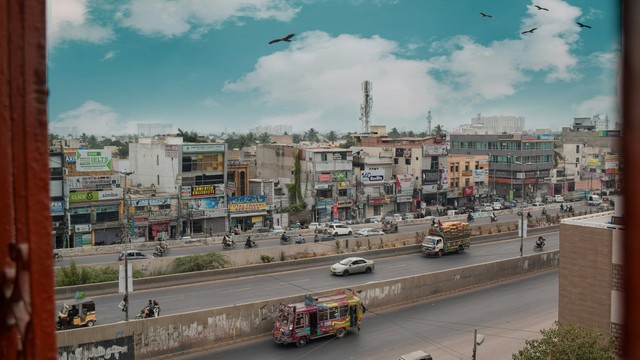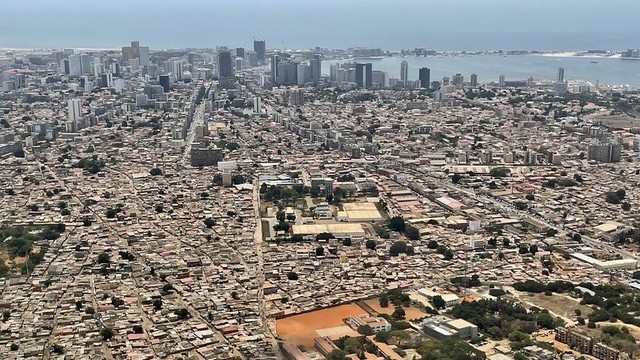The fastest-growing cities in Latin America and the Caribbean
Most of the 20 fastest-growing cities in Latin America and the Caribbean between 2000 and 2020 are small cities. But use another metric, the largest annual increase in their population, and the top 20 mostly comprises large cities – nine of them national capitals.


Skyline of Sao Paulo (Photo: Francisco Anzola, via Flickr, CC BY 2.0)
Previous insights in this series where we looked at the fastest-growing cities in the world, Africa and Asia, generated such a large readership that we decided to cover other regions. So here it is for Latin America and the Caribbean (LAC) where some cities have populations growing by hundreds of thousands each year – although fewer of them than for Africa and Asia.
Can we begin to imagine how city governments can cope? In most of these cities there are huge backlogs in housing and basic services that also demand attention, although overall, this region has fared better than those in Asia and Africa.
Latin America is also much more urbanised than either Asia and Africa. And many city governments there are ahead of those in the two other regions in working with low-income groups to upgrade homes in informal settlements.
Measuring growth
A city’s population growth is usually measured by its annual average population growth rate (see table 1 below). But city and national governments need to know the absolute change in population each year, as this is the number of newcomers (by birth or in-migration) needing housing and public services. Here, it is the annual average increment in population that is of interest (table 2) rather than growth rate.
Some caution is needed, however, when comparing population growth rates or increments between cities, because boundary extensions, or local government systems (which produce different boundaries) often include large populations not previously considered part of a city.
There are also the data problems described in previous insights. We are using the same UN global dataset as previously while recognising its limitations, including the fact that it has not been updated since 2018.
Ranking cities by population growth rates
In table 1, the nations with the largest populations and economies have most of the most rapidly growing cities: Brazil (two), Colombia (five), Mexico (three) and Venezuela (two).
Among the countries with smaller populations, Costa Rica has two as does Honduras. No city in the Caribbean was growing fast enough to be on this list – although Santo Domingo (Dominican Republic) was close.
Table 1: Latin America and the Caribbean’s most rapidly growing cities 2000-2020
Information drawn from the United Nations Population Division’s database, which includes all cities with 300,000 or more inhabitants in 2018. It also draws on each city’s Wikipedia profile.
Ranking cities by increments in population
But if we measure annual average increments, a completely different list of cities emerges (table 2).
The scale of the population increment for some cities is astonishing. Six cities grew by more than 100,000 people a year, and two (Sao Paulo and Bogota) increased by over 200,000.
Brazil had eight of the 20 cities with the highest annual average increment in population, followed by Mexico with three, and Colombia with two. Bogota and Asunción are the only cities on both lists.
Table 2: Cities with the largest annual increment in population, 2000-2020
Information drawn from the United Nations Population Division’s database, which includes all cities with 300,000 or more inhabitants in 2018. It also draws on each city’s Wikipedia profile.
Underpinnings of rapid growth
As in Africa, Asia and the world generally, it is striking how few of LAC’s fastest growing cities are among its largest (table 1). The world’s largest cities almost never appear in lists of the world’s most rapidly growing cities if population growth rates are used – although they inevitably did so when they were smaller. To risk stating the obvious, the largest cities must have been among the fastest-growing cities in the past.
Most of the cities with the fastest population growth rates 2000-2020 were small cities in 2000.
If we look at table 1, in 2000, all 20 cities had over 100,000 in 2000 but only two were ‘million cities’ – Bogota and Asunción, which are both national capitals. By 2020 two others were million cities: Tegucigalpa (also a national capital) and Cochabamba.
Replacing Indigenous populations
Cities have always been associated with centres of political power and the individuals/households, businesses and government and civil society institutions this attracts. At least 12 of LAC’s 20 fastest growing cities are either national or state/provincial capitals.
Most have been important cities for centuries, founded as Spanish cities, including eight during the 16th century. Only two were founded in the 20th century (Cancun and Pôrto Velho).
Many cities displaced indigenous populations. For instance, in the years after the Spanish conquest of Yucatán, much of the Maya population died or left as a result of disease, warfare and famines. Ironically, some cities are named after the indigenous populations they displaced – such as Cochabamba, Tegucigalpa and Bogota.
Large cities in the future will be in nations with large populations (to state the obvious), economic success, and good city and national governance. For most, it will require effective decentralisation. For some this implies tackling issues such as high homicide rates and managing large displaced populations.
Shared characteristics and local contexts
But in each of these cities we need to understand the varied, complex and ever-changing specific local contexts and subtleties, and changing government, private and public external influences. And, of course, how the climate crisis develops and how cities respond.
For any city, a large part of the workforce is government employees, especially if it hosts provincial/state and national administrations.
Then there are those where public sector provision (schools and universities, public health, police, public and privatised utilities) are important as service providers and employers. All 20 of the fastest growing cities have Wikipedia profiles and at least 15 have official government websites. Most have several universities and large student populations – in Asunción the two largest universities have 60,000 enrolments.
Among other shared characteristics, most have good football teams, and decent connections to airports, highways or seaports. Some serve national or international markets for goods such as high value agricultural products, oil, gas, timber and minerals (including gold and cassiterite that help explain Pôrto Velho’s rapid growth).
Several are important tourist centres, including the two fastest growing (Cancun and Alajuela). Some are noted for their advanced industry such as Cochabamba, known as the ‘Silicon Valley’ of Bolivia, or are financial centres (many international banks have their HQs in Asunción), or branches of US corporations as in Reynosa (close to border with USA).
Most of the 20 cities are characterised by a lack of data on housing quality and basic services in informal settlements. For Cancun, “the municipal authorities have struggled to provide public services for the constant influx of people, as well as limiting squatters and irregular developments, which now occupy an estimated 10-15% of the mainland area on the fringes of the city.” This could be applied to most of the other cities – many of which have much higher proportions of their population in informal settlements.
Bogota and Asunción are the only cities in the fastest growing list and the largest increment list. Both are home to national and lower level governments with all the employment they generate. But Bogota has something more. It is recognised as one of the world’s most successful large cities – as well as being a hub for Colombia’s commercial, financial, tourism and media activities, and a centre for higher education.
But some caution is needed in assuming this high population growth rate is linked only to Bogota’s prosperity. It is also due to large numbers of displaced persons who have migrated to the city.
Future growth?
There is a great enthusiasm for lists of cities and their populations’ rate of change. But ‘league tables’ of cities need to be drilled down to work out what is really going on – and what all this could mean for the future of the LAC’s cities more generally.
We need studies of cities with depth and detail, a strong knowledge of local and national context and the capacity to engage low-income groups and local authorities.



